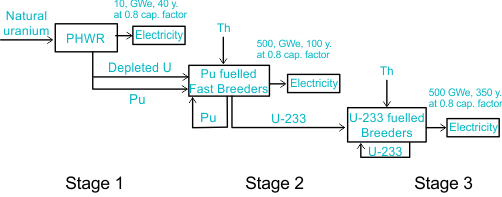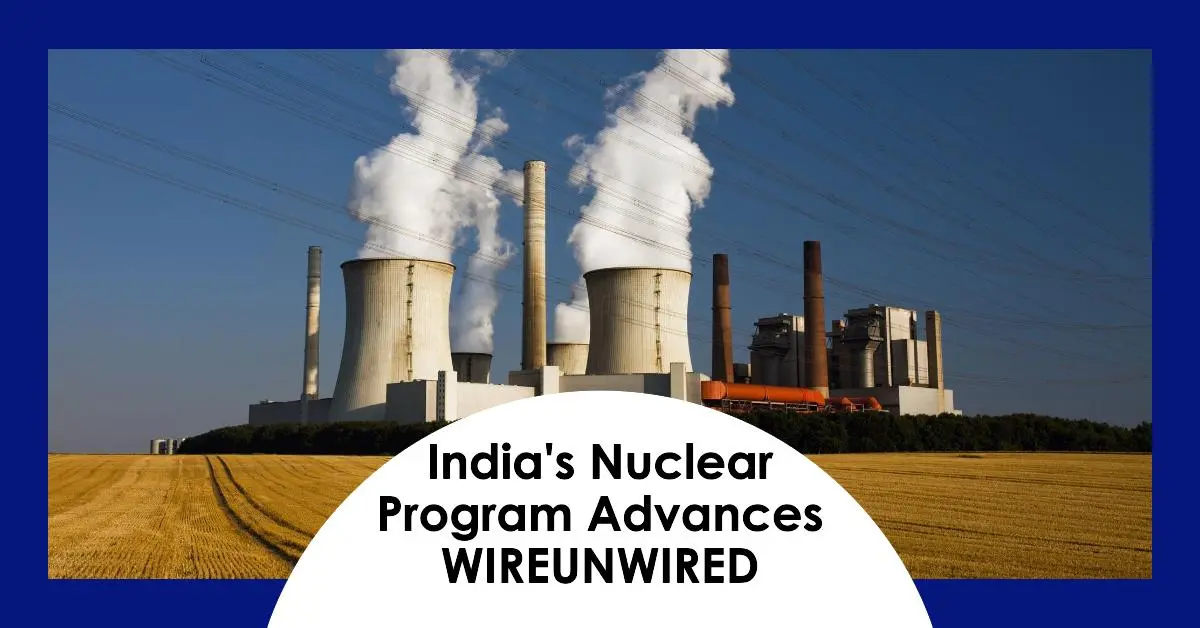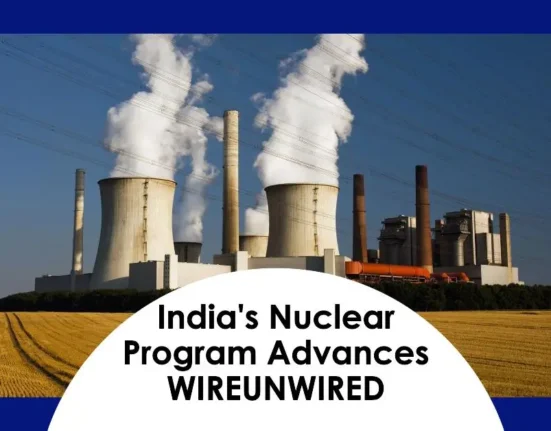FYI , India has finally succesfully achieved the second stage of its ambitious 3 stage nuclear program. This has marked a significant step towards India becoming a self-independent nuclear energy powerhouse. The successful completion of the second stage, which involves the use of plutonium-based fuel, has brought the country closer to the final stage of the program, which aims to utilize the abundant thorium reserves for sustainable nuclear energy production.
Table of Contents
ToggleWhy India is Pursuing a 3-Stage Nuclear Program?
India’s decision to pursue a 3-stage nuclear program is driven by its unique energy requirements and the desire to achieve energy independence. According to some reports ,The energy requirements of India will triple down soon as India is on its way to become Viksit Bharat by 2047 and the conventional methods can’t ramp up the productions to meet the energy requirements thus India has towards move to Nuclear Energy. The country possesses approximately 25% of the world’s thorium reserves but has limited uranium resources, accounting for less than 3% of global uranium reserves. This disparity has led India to develop a strategic plan to harness its thorium reserves for long-term nuclear energy production.
The 3 stage nuclear program is designed to maximize the utilization of India’s natural resources while minimizing its reliance on imported nuclear fuel.
Different Stages of India’s 3 Stage nuclear program.

Stage 1:
Pressurized Heavy Water Reactors (PHWRs) The first stage of 3 Stage Nuclear Program involves the use of natural uranium as fuel in Pressurized Heavy Water Reactors (PHWRs). These reactors are designed to produce plutonium-239 as a by-product while generating electricity. The spent fuel from these reactors is reprocessed to extract the plutonium-239, which is then used in the second stage.
Stage 2:
Fast Breeder Reactors (FBRs) In the second stage, the plutonium-239 extracted from the first stage is used as fuel in Fast Breeder Reactors (FBRs). These reactors are designed to produce more fissile material than they consume, effectively “breeding” more fuel. It is due to its principle of producing more fissible material than they consume ,they got their name Fast Breeder Reactors (FBRs). The FBRs use a mixture of plutonium-239 and uranium-238 as fuel, and during the fission process, some of the uranium-238 is converted into fissile plutonium-239. This allows for the efficient utilization of uranium resources and the production of additional fissile material.
Stage 3:
Thorium-Based Reactors The third and final stage involves the use of thorium-based reactors, which is aimed to utilize India’s abundant thorium reserves as fuel. Thorium-232,which is a naturally occurring isotope but the main problem with this is that is not fissile but yes it can be converted into fissile uranium-233 through a series of nuclear reactions. In this proposed stage, the thorium-232 will be mixed with either uranium-233 or plutonium-239 as a seed material in a specially designed reactor. The thorium-232 will undergo neutron bombardment, capturing neutrons to form uranium-233, which can then undergo fission and sustain the nuclear chain reaction.
The thorium-based reactors are expected to be more efficient, safer, and generate less long-lived radioactive waste compared to traditional uranium-based reactors. Additionally, thorium is more abundant in nature than uranium, making it a more sustainable fuel source for long-term nuclear energy production.
Benefits of Achieving the 3 Stage Nuclear Program
The successful implementation of the 3-stage nuclear program will have far-reaching benefits for India’s energy security, environmental sustainability, and global standing. By actively using its thorium reserves, India can significantly reduce its dependence on imported nuclear fuels majority of which today is Thorium and achieve greater energy self-sufficiency. Furthermore, thorium-based nuclear reactors are considered much safer and more environmentally friendly compared to traditional uranium-based reactors. Thorium is more abundant in nature, and its fuel cycle generates less long-lived radioactive waste, making it a more sustainable option for nuclear energy production.
Conclusion.
Achieving the 3-stage nuclear program will also solidify India’s position as a member of the nuclear society, granting it access to advanced nuclear technologies and international collaborations. This will not only enhance the country’s technological capabilities but also strengthen its diplomatic relations with other nuclear-capable nations.
While the road to achieving the final stage of the program is still long and challenging, India’s progress thus far is a testament to its commitment to scientific innovation and energy security. With continued efforts and international cooperation, India’s 3-stage nuclear program has the potential to reshape the global energy landscape and serve as a model for sustainable nuclear energy production.





